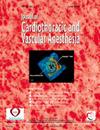分析《2024 年 ESC/EACTS 心房颤动管理指南》。
IF 2.3
4区 医学
Q2 ANESTHESIOLOGY
Journal of cardiothoracic and vascular anesthesia
Pub Date : 2025-03-01
DOI:10.1053/j.jvca.2024.11.020
引用次数: 0
摘要
2024年欧洲心脏病学会心房颤动(AF)指南强调以患者为中心的管理方法,围绕AF- care途径构建:合并症和危险因素管理(C),避免中风和血栓栓塞(A),通过心率和节律控制减轻症状(R),评估和动态再评估(E)。该框架确保有效管理高血压、心力衰竭、糖尿病和肥胖等合并症,以预防疾病进展并改善结果。该指南的一个关键原则是涉及患者、家属、护理人员和医疗团队的共同决策,以确保反映患者偏好的个性化护理。该指南还强调医疗公平,倡导消除与性别、种族、残疾和社会经济地位有关的差异。对于诊断,心电图确认临床房颤是必不可少的,然后使用CHA₂DS₂-VASc评分进行风险分层,指导抗凝治疗。大多数患者首选直接口服抗凝剂,因为它们具有良好的安全性。卒中预防是重中之重,心律控制是适合患者的一线治疗。对于那些尽管药物治疗仍有持续症状的患者,建议导管消融。心率控制策略,包括-受体阻滞剂、地高辛和钙通道阻滞剂,可用于控制心率和症状。对患者、家属和医疗服务提供者进行持续教育,支持知情决策和动态重新评估,优化患者预后和生活质量。本文章由计算机程序翻译,如有差异,请以英文原文为准。
Analysis of The 2024 ESC/EACTS Guidelines For The Management Of Atrial Fibrillation
The 2024 European Society of Cardiology guidelines for atrial fibrillation (AF) emphasize a patient-centered approach to management, structured around the AF-CARE pathway: Comorbidity and risk factor management (C), Avoiding stroke and thromboembolism (A), Reducing symptoms through rate and rhythm control (R), and Evaluation and dynamic reassessment (E). This framework ensures that comorbidities such as hypertension, heart failure, diabetes, and obesity are effectively managed to prevent disease progression and improve outcomes. A key principle of the guidelines is shared decision making involving patients, families, caregivers, and healthcare teams to ensure individualized care that reflects patient preferences. The guidelines also stress healthcare equity, advocating for the elimination of disparities related to sex, ethnicity, disability, and socioeconomic status. For diagnosis, electrocardiographic confirmation of clinical AF is essential, followed by risk stratification using the CHA₂DS₂-VASc score to guide anticoagulation therapy. Direct oral anticoagulants are preferred for most patients because of their good safety profile. Stroke prevention is prioritized, with rhythm control as first-line treatment for suitable patients. For those with persistent symptoms despite medications, catheter ablation is recommended. Rate control strategies, including beta-blockers, digoxin, and calcium channel blockers, are used to manage heart rate and symptoms. Ongoing education for patients, families, and providers supports informed decision making and dynamic reassessment, optimizing patient outcomes and quality of life.
求助全文
通过发布文献求助,成功后即可免费获取论文全文。
去求助
来源期刊
CiteScore
4.80
自引率
17.90%
发文量
606
审稿时长
37 days
期刊介绍:
The Journal of Cardiothoracic and Vascular Anesthesia is primarily aimed at anesthesiologists who deal with patients undergoing cardiac, thoracic or vascular surgical procedures. JCVA features a multidisciplinary approach, with contributions from cardiac, vascular and thoracic surgeons, cardiologists, and other related specialists. Emphasis is placed on rapid publication of clinically relevant material.

 求助内容:
求助内容: 应助结果提醒方式:
应助结果提醒方式:


